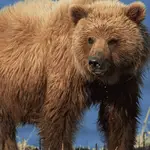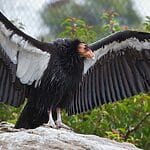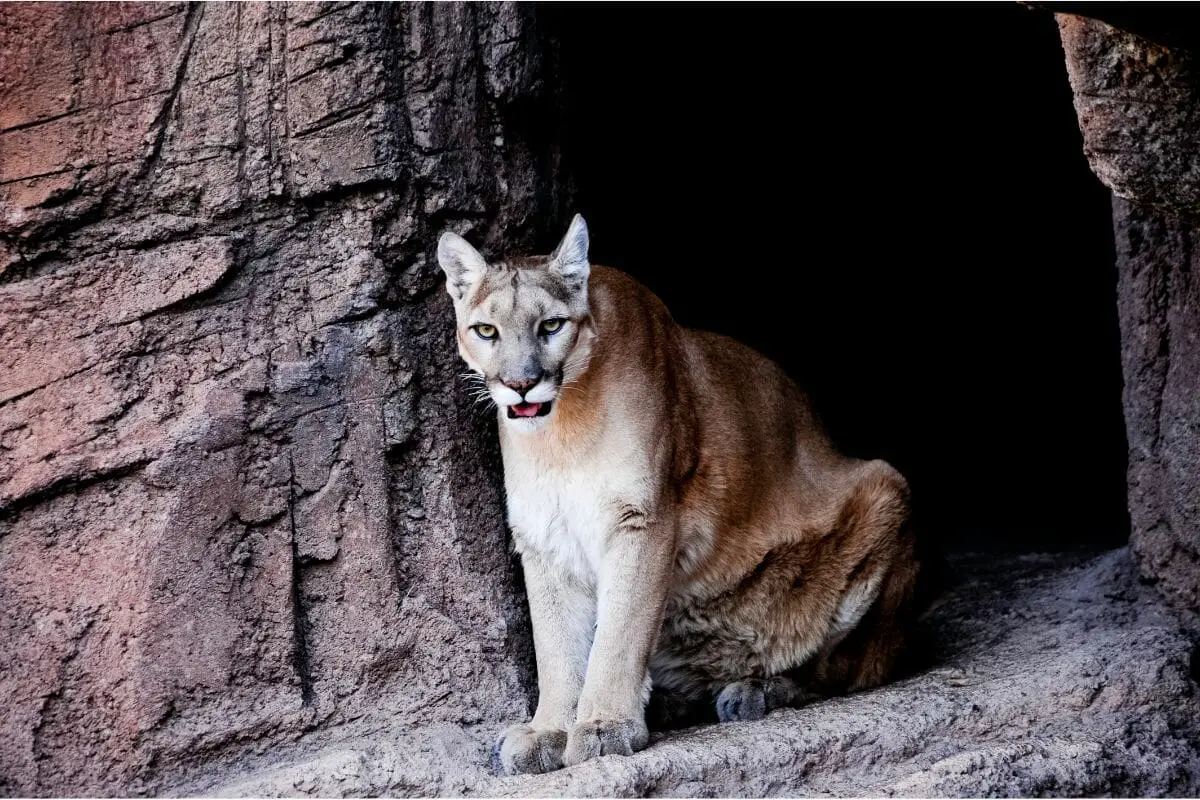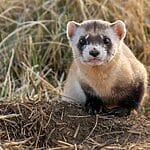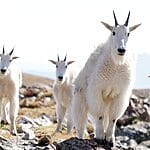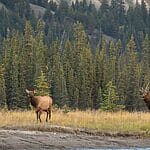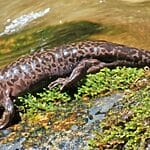14 Common Dangerous Animals in the Grand Canyon – You Might Not Know About
In the stunning landscapes of the Grand Canyon National Park, you can spot endangered, rare, and common dangerous animals. The list of common dangerous animals in the Grand Canyon ranges from elusive reptiles to the largest venomous snakes in the United States.
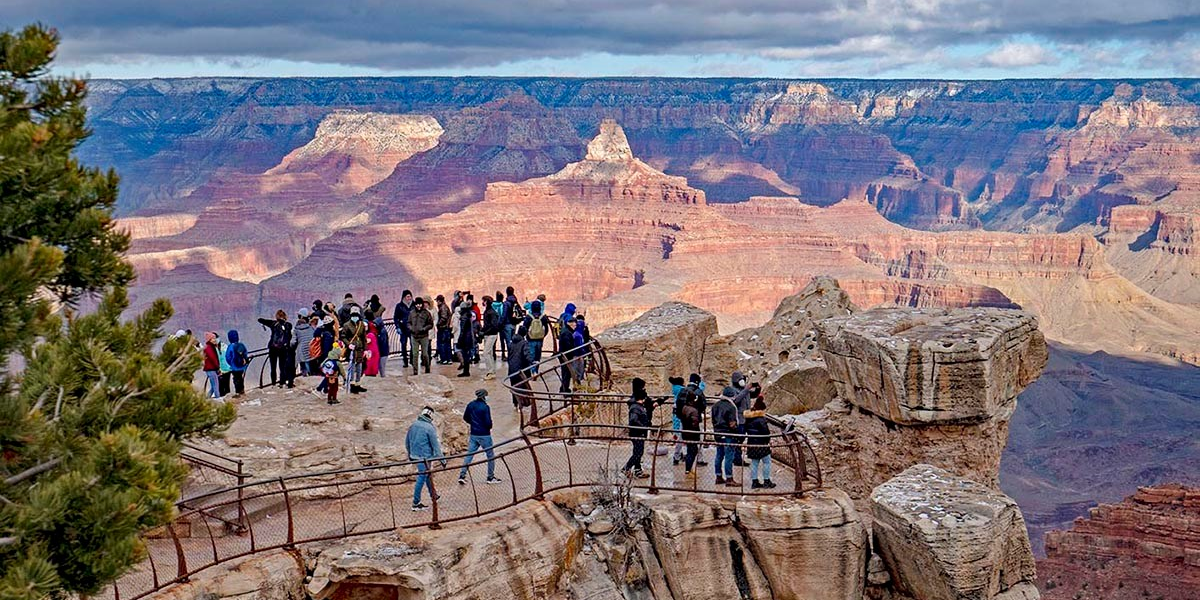
Grand Canyon National Park, a geological wonder, boasts breathtaking landscapes, towering cliffs, and the mighty Colorado River. While known for its stunning scenery, the park is also home to a diverse array of wildlife.
Moreover, you may encounter species like mule deer, bighorn sheep, and elusive mountain lions in the Grand Canyon National Park. So, if you are planning to visit Grand Canyon National Park for your upcoming vacations then stay aware and cautious with the dangerous animals we have covered in this blog for you.
Though encounters with the most dangerous animals like rattlesnakes, scorpions, and black widow spiders are rare, however, it can occur. While exploring the Grand Canyon wildlife understanding and respecting the park’s wildlife is crucial for a safe and enjoyable experience.
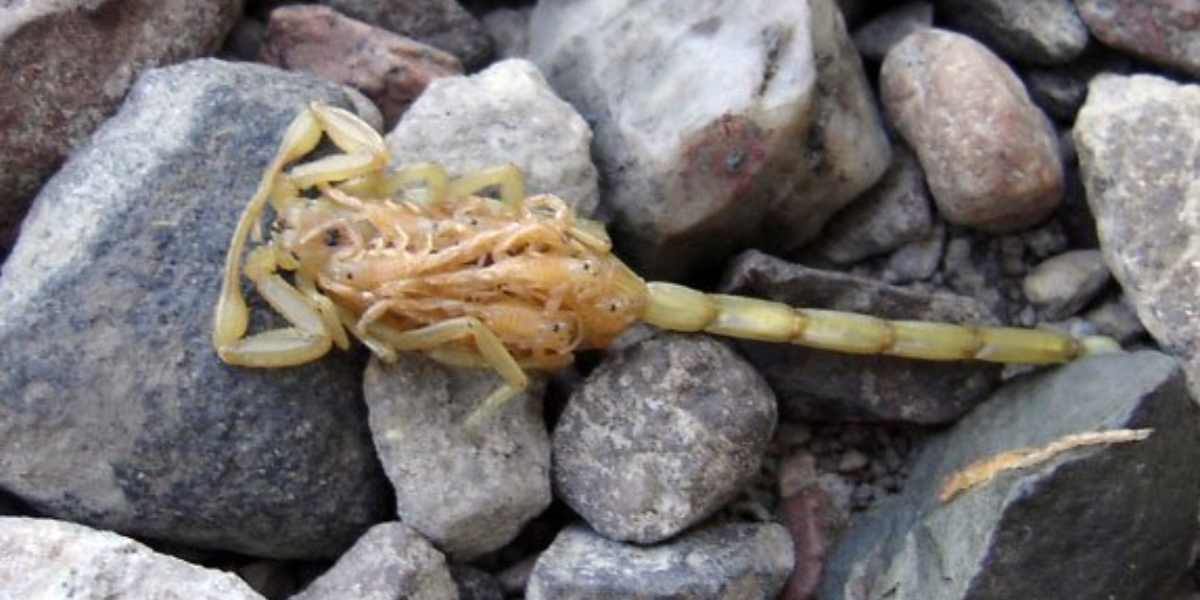
Additionally, the National Park Service strictly prohibits feeding animals in the Grand National Park. It is harmful to both, animals and visitors. As it will make them more likely to approach humans, and might result in harmful incidents. Besides that, if you feed the wrong food to the wild animals it can make them unhealthy and even they can die.
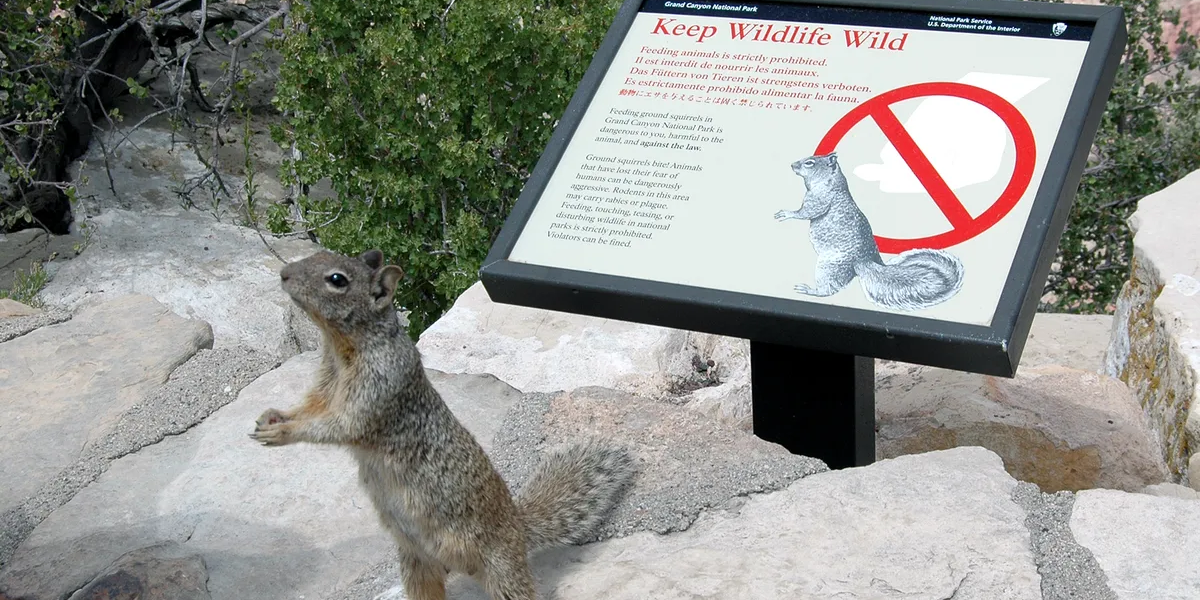
14 Common Dangerous Animals in the Grand Canyon National Park you must look out for.
One of the largest land predators in the park to look out for is the mountain lion, however, the mountain lions avoid interacting with humans as they don’t consider humans as their prey. It is advised to carefully drive at night, as these nocturnal animals commonly come in front of vehicles.
Besides that, there are many common dangerous animals in the Grand Canyon that you might not heard about. But don’t worry we have listed down the top 14 common dangerous animals in the Grand Canyon in this blog.
Rock Squirrel – Dangerous Rodents
Rock squirrels, inhabitants of the Grand Canyon National Park, thrive in the rocky landscapes and arid environments of the region. They are one the most common dangerous animals in the Grand Canyon, and you can spot them everywhere. But why rock squirrels are the most dangerous animals in the Grand Canyons?
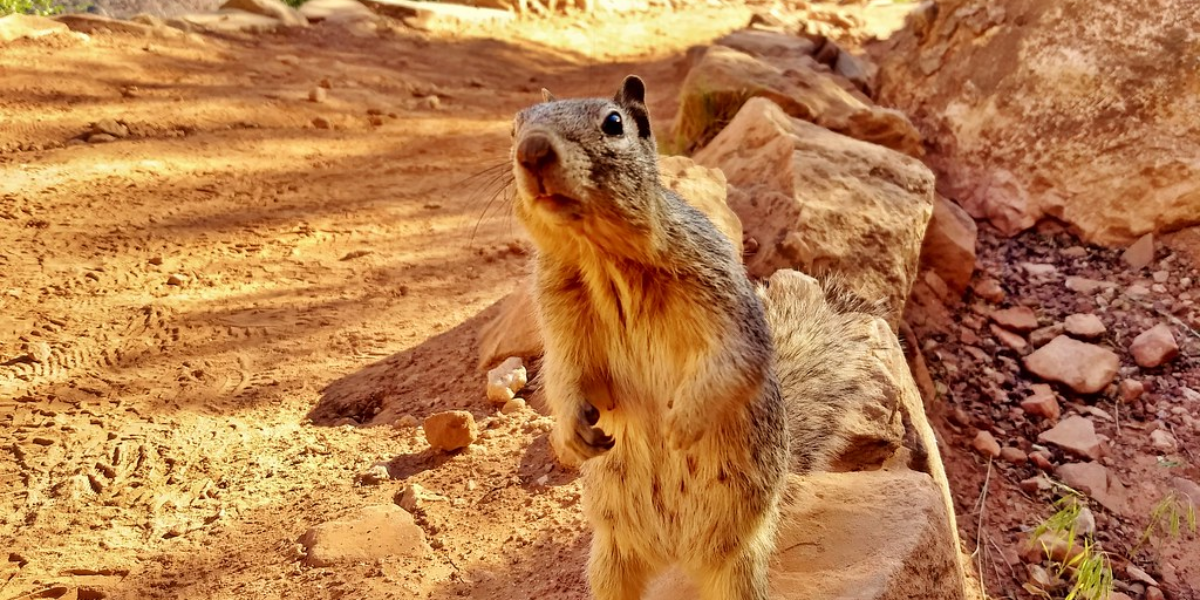
There is no clear answer to why rock squirrels act so aggressively towards humans, however, there can be some possible factors behind it.
Like they have become familiar with humans, as they feed them. It results in making them less afraid of humans. Another possible reason can be squirrels feel threatened if someone tries to come closer or touch them just for a cute squirrel selfie.
Rock squirrels are not considered a threatened species on the IUCN red list but sadly their population is facing potential threats from habitat disturbance and alterations.
Coyotes
Coyotes, adaptable canids, can be found throughout North America, including the Grand Canyon National Park. You can spot them in their natural habitat that spans a variety of environments, from forests to deserts, showcasing their remarkable adaptability.
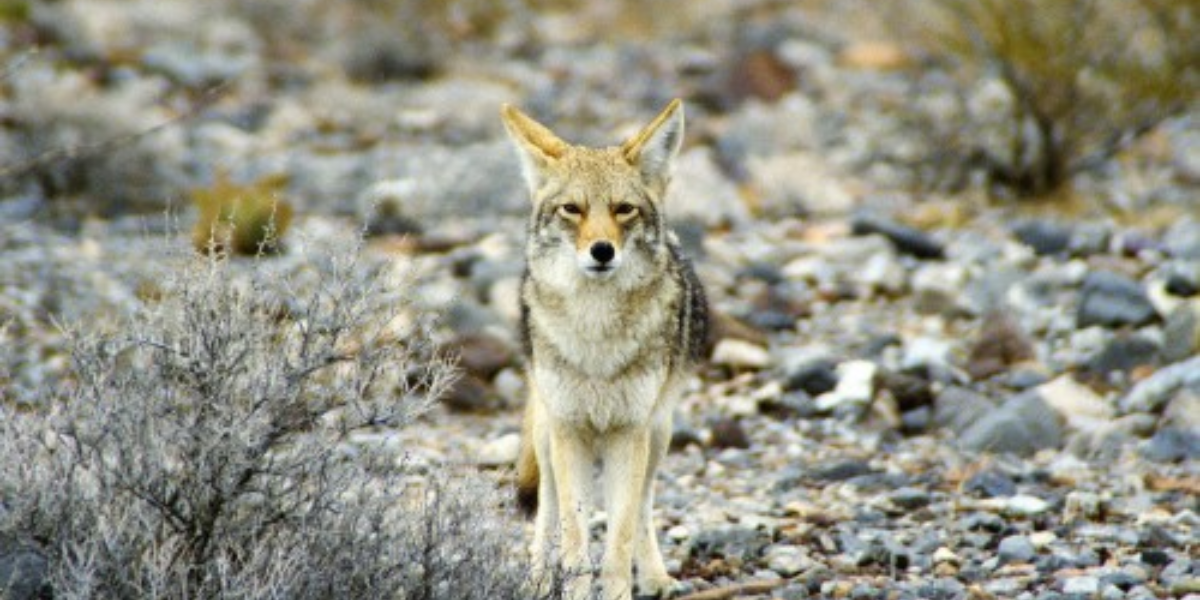
While exact coyote populations in the Grand Canyon are hard to calculate, however, they are present and play a vital role in the ecosystem. Thankfully, coyotes are not currently considered a threatened species. Coyotes are facing challenges such as habitat loss and human-wildlife conflict.
On the IUCN Red List, coyotes are classified as a species of “Least Concern.” Although there is no record of coyotes attacking humans, however, they attack cattle, and small animals.
Some Other Common Dangerous Land Animals in the Grand Canyon – (With Pictures)
Mountain Lions
Mountain lions, also known as cougars or pumas, and one of the common dangerous animals in the Grand Canyon National Park. Mountain lions inhabit in various regions across North and South America, including the Grand Canyon National Park.
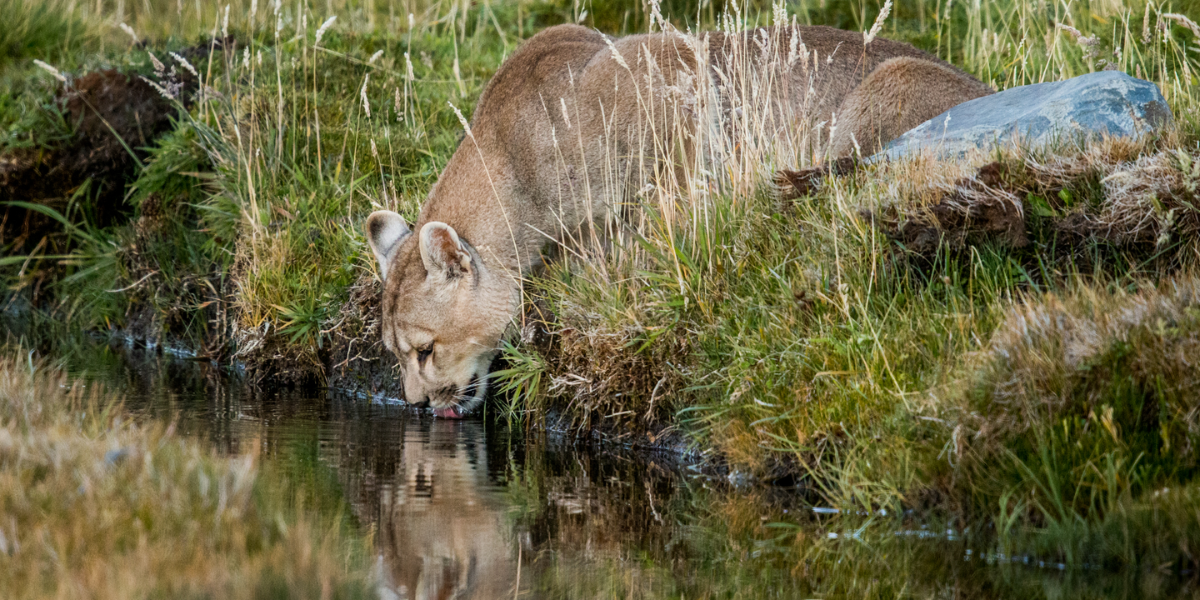
These cougars live in diverse landscapes, from mountains to deserts, where they are skilled hunters and elusive predators. It is difficult to tell the exact number of mountain lion population in the Grand Canyon National Park, as these wild cats are elusive. However, they have been seen multiple times.
While mountain lions are not currently classified as a threatened species, their populations face threats such as habitat fragmentation and human-wildlife conflicts. On the IUCN Red List, mountain lions are categorized as a species of “Least Concern.”
Mule Deer
Mule deer are found throughout North America, including the diverse landscapes of the Grand Canyon National Park. Their natural habitat ranges from forests to arid shrublands, showcasing their adaptability.
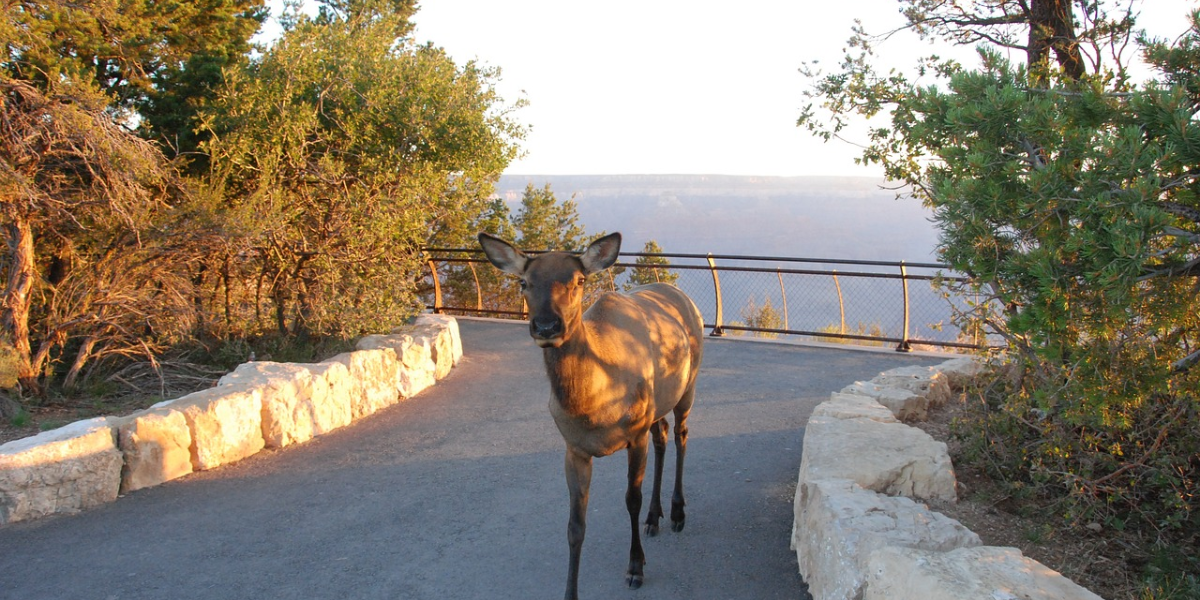
Mule deer are generally not considered dangerous to humans in the Grand Canyon National Park. However, if you visit Grand Canyon National Park in the mating season then you must stay cautious. In rutting or mating season they can become very aggressive, and they can attack anyone.
Moreover, if deers feel threatened, provoked, or approached they might attack you with their large pointy antlers which result in serious injuries.
While they are not currently marked as a threatened species, mule deer populations face challenges such as habitat loss, predation, and climate change. On the IUCN Red List, they fall under the category of “Least Concern” species.
Bison
The North Rim of Grand Canyon National Park is home to a population of bison, descendants of a herd brought to the area over a century ago. These massive mammals, with their thick coats and impressive horns, find refuge in the diverse terrain of the North Rim, including meadows, forests, and even the canyon’s edge.
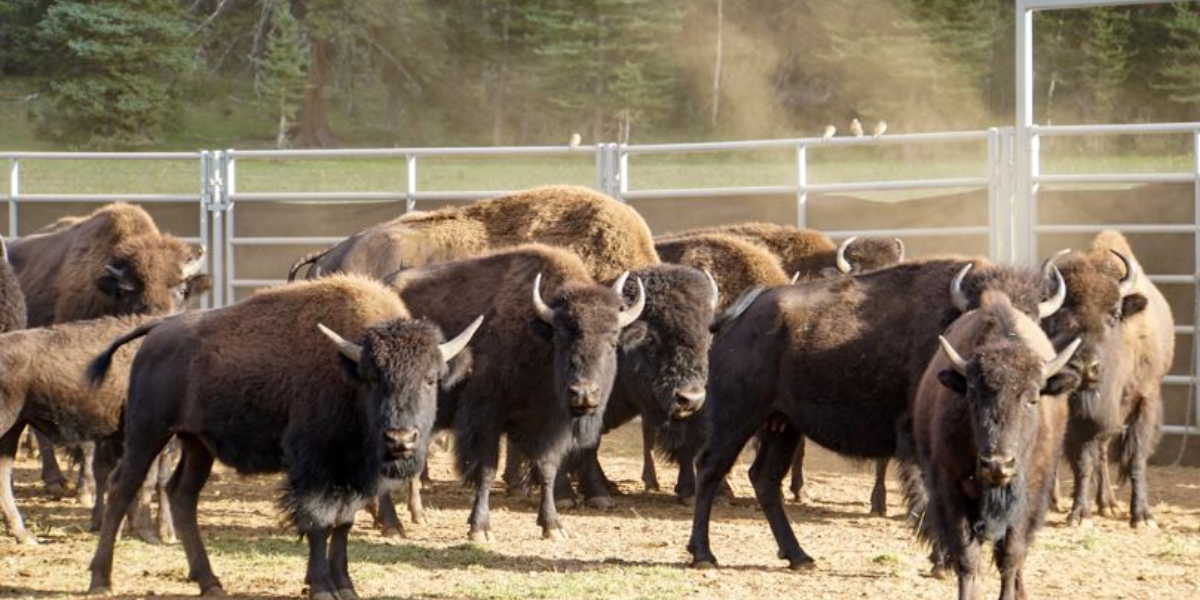
These are one the most common dangerous animals in the Grand Canyon and play a vital role in the ecosystem by grazing on grasses and shrubs, which helps to maintain healthy plant balance.
Interesting facts: Bison are the largest land mammals in North America, weighing up to 2,000 pounds.
Elk
Elk are one of the largest members of the deer family within the park. These impressive animals, with their towering antlers and powerful physiques, thrive in the diverse habitats of the South Rim. It includes ponderosa pine and pinyon-juniper forests, meadows, and even the canyon’s rim itself.
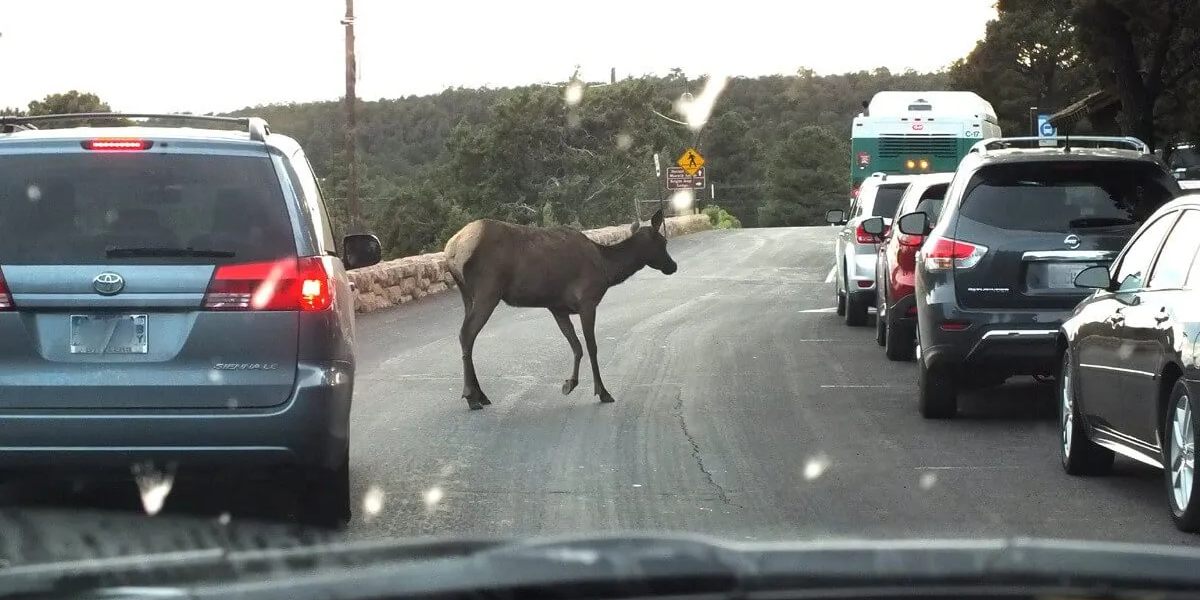
Interesting facts: Elk are expert buglers, known for their distinctive bugling calls that echo through the canyons. These calls, especially prominent during mating season, serve as a way for bulls to attract females and establish dominance.
Black Bears
Black bears, Ursus americanus, are found in diverse habitats across North America, including the woodlands and forests of the Grand Canyon National Park.
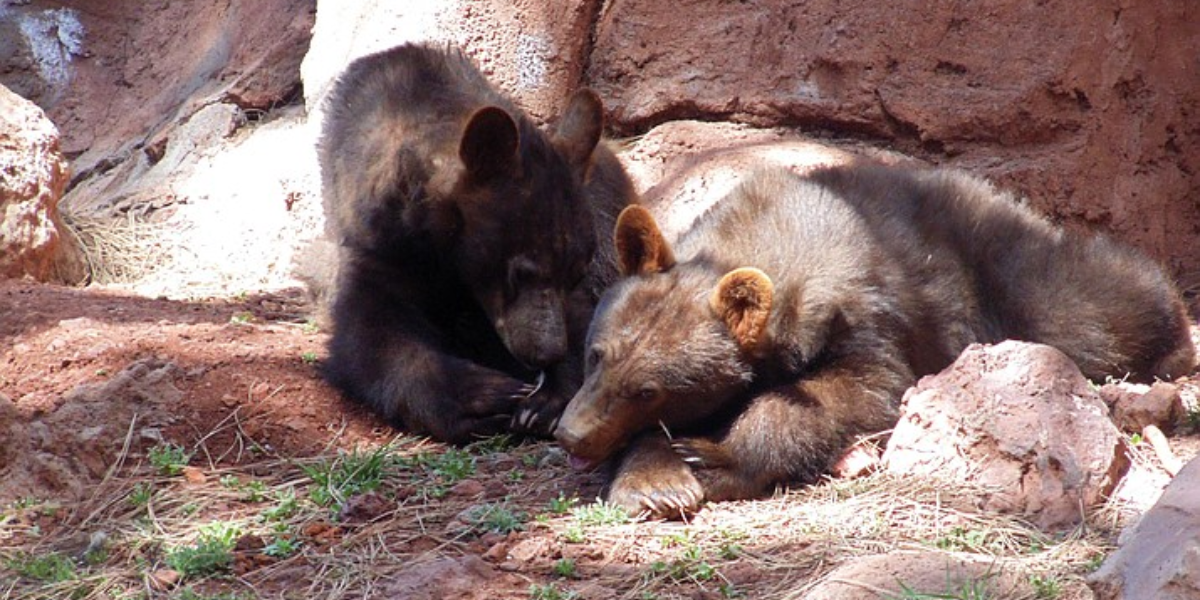
Currently, these are common dangerous animals in the Grand Canyon, and are not classified as a threatened species. But their population is suffering from threats such as habitat loss, human-wildlife conflicts, and potential impacts of climate change. On the IUCN Red List, black bears are generally labeled as a species of “Least Concern.”
Although black bears are generally not aggressive towards humans, improper food handling and habituation of human food sources can lead to potentially dangerous encounters.
Javelina
Javelina, also known as collared peccaries, inhabit the southwestern regions of North America, including the Grand Canyon National Park. Their natural habitat encompasses arid deserts, grasslands, and scrublands.
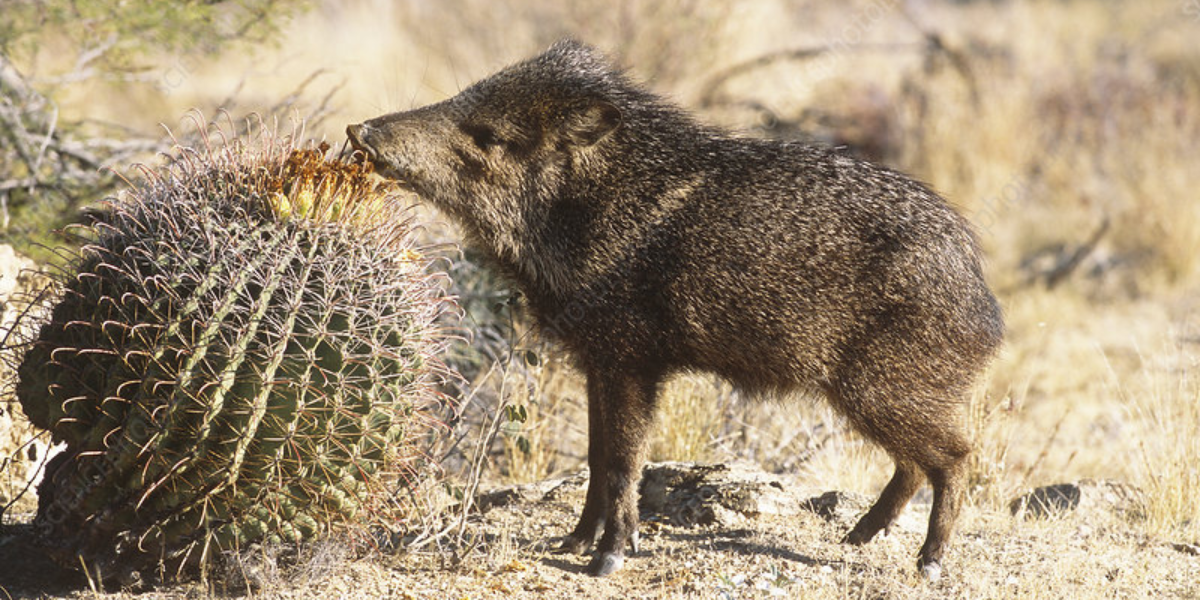
You can spot these social mammals in the park’s lower elevations. Javelina doesn’t fall under the category of threatened species. But they face challenges such as habitat loss, and human-wildlife conflicts.
The IUCN Red List categorizes them as “Least Concern.” Javelina has a docile nature, however, can display aggression if cornered or provoked. It is advised to maintain distance and stay cautious.
Bark Scorpions – Most Dangerous Animal in the Grand Canyon Wildlife
Bark scorpions are common dangerous animals in the Grand Canyon, and are nocturnal animals that hide during the daytime usually under rocks, and in cervices.
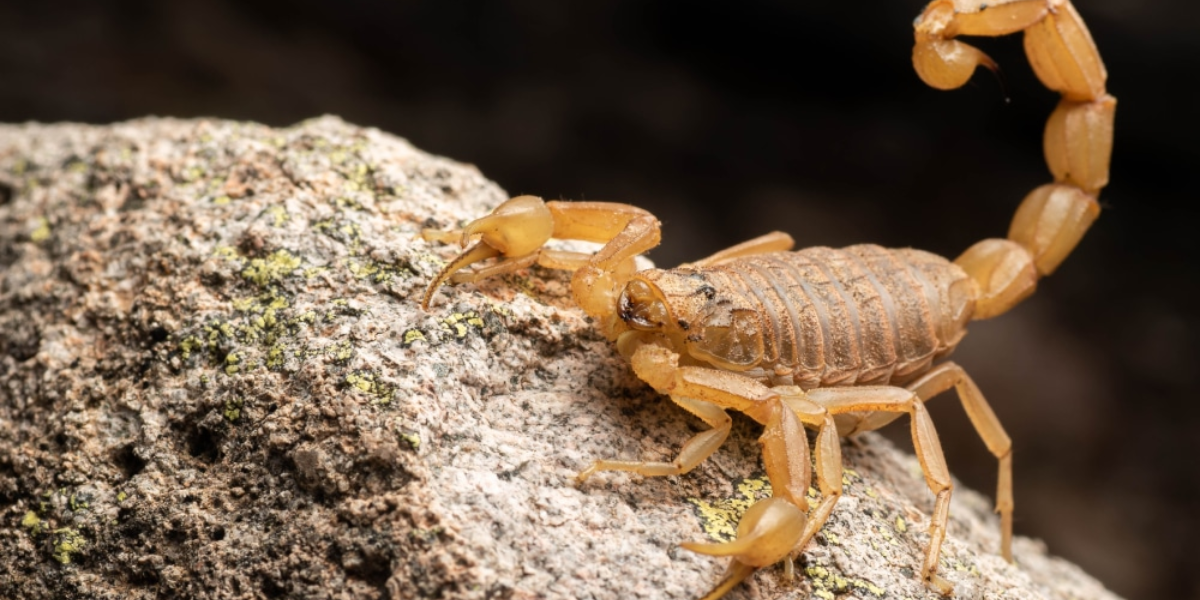
Bark scorpions, resilient arachnids, are commonly found in the southwestern United States, including the Grand Canyon National Park. These bark scorpions live in rocky terrains, deserts, and areas with ample hiding spots like bark and debris.
Bark scorpions are not classified as threatened species, but their population is declining such as habitat destruction due to human development and climate change.
These scorpions are generally not considered the most dangerous species in the Grand Canyon. While their stings can cause discomfort, fatalities are rare.
Gila Monster – Grand Canyon Reptiles
Gila monsters, are renowned for their striking appearance. These reptiles are native to the southwestern United States, including the Grand Canyon National Park.
These venomous lizards are one of the common dangerous animals in the grand canyon. They thrive in arid environments, favoring desert scrublands and rocky habitats.
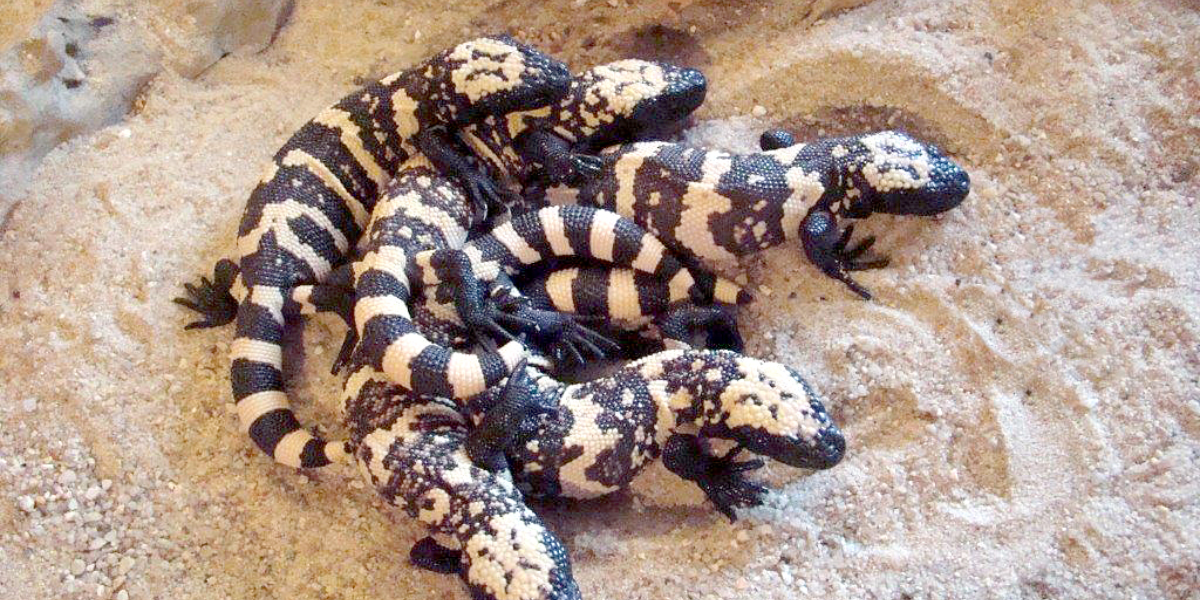
These venomous lizards are considered as “Near Threatened” species on the IUCN red list of endangered species. The population of the Gila monster is decreasing due to challenges such as habitat fragmentation and illegal collection for the exotic pet trade.
Rattlesnakes
Rattlesnakes, with their distinctive rattle and potent venom, are one of the common dangerous animals in the grand canyon. In the awe-inspiring landscape of Grand Canyon National Park, home to diverse ecosystems and unique wildlife, these fascinating reptiles play a crucial role in the ecosystem.
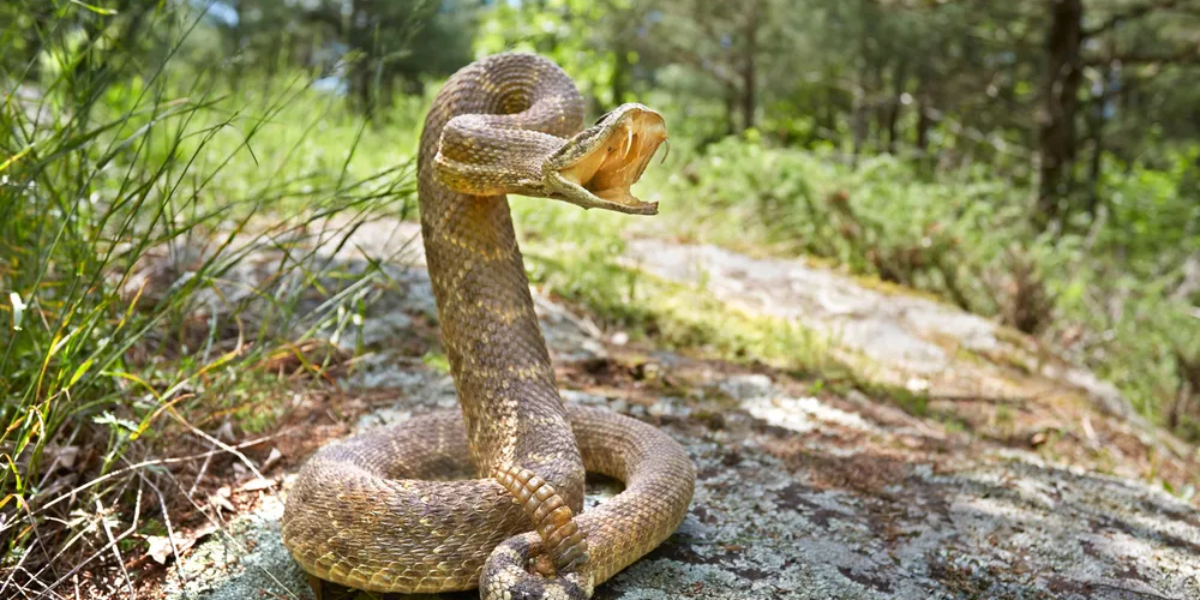
Nine species of rattlesnakes live in the Grand Canyon region, with two subspecies of the Western Rattlesnake found within the park itself. These snakes inhabit various habitats which include arid deserts at the canyon’s bottom, rocky slopes, near springs, streams, and even the river.
Some species, like the Grand Canyon Rattlesnake, are endemic to the area and found nowhere else on Earth. While sightings are not uncommon, especially in warmer months, rattlesnakes tend to be elusive and are most active during the daytime. Additionally, the IUCN Red List classified rattlesnakes as “Endangered species.”
Tarantula Hawks
Tarantula hawks have iridescent blue bodies and vibrant orange wings and are captivating predators that call the Grand Canyon home. These large wasps, reaching up to 2 inches in length, prefer the South Rim and within the canyon itself, where their favorite prey, tarantulas live.
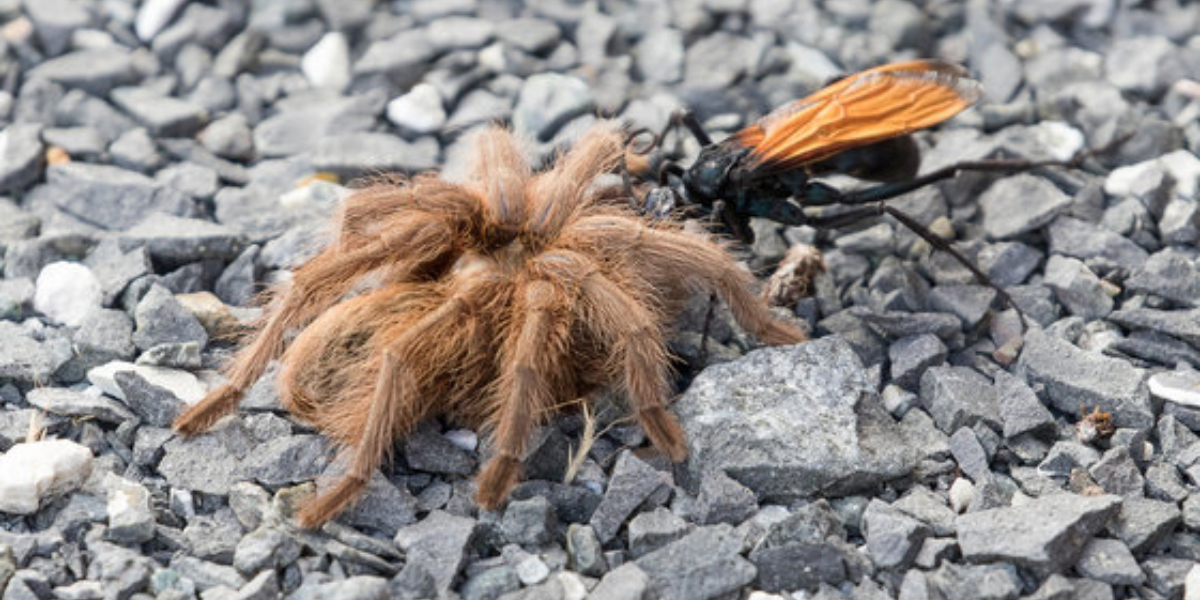
These formidable hunters are known for their unique hunting technique, which is paralyzing tarantulas with their venom before dragging them back to their nests to feed their young.
Interesting Fact: Tarantula Hawk’s sting is incredibly painful but not venomous to humans.
Round-tailed Ground Squirrel
The Round-tailed Ground Squirrel, scientifically known as “Xerospermophylis tereticaudus,” inhabits the arid and semi-arid regions of the southwestern United States and northern Mexico.
The natural habitat of these common dangerous animals in the grand canyon are desert scrublands, rocky slopes, and sandy areas where vegetation is sparse. These squirrels are primarily found in states like Arizona, Nevada, Utah, and parts of California, as well as in regions of Sonora and Baja California in Mexico.
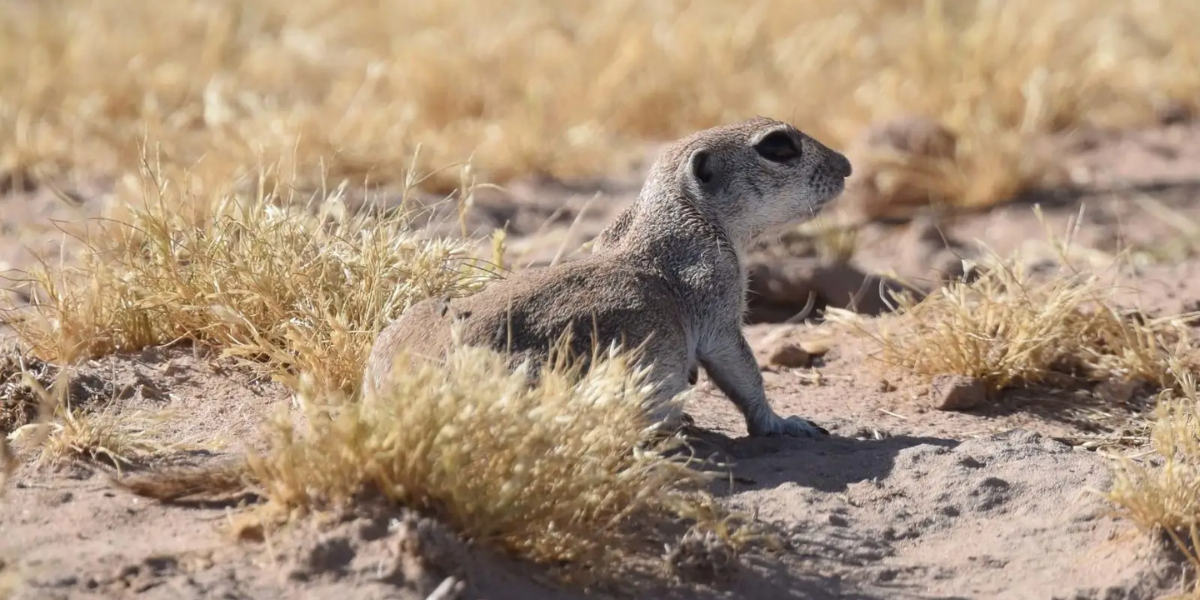
They are small rodents, typically measuring around 8 to 10 inches in length, with a round tail that distinguishes them from other ground squirrel species. Their fur color ranges from pale gray to brown, aiding in camouflage against their arid surroundings.
In the Grand Canyon, Round-tailed Ground Squirrels are considered potentially dangerous due to their ability to carry diseases such as plague and hantavirus. They are also known to bite when threatened or cornered.
Bark Scorpions
Bark scorpions, scientifically known as Centruroides sculpturatus, are prevalent across the southwestern United States, particularly in the Grand Canyon region.
Their natural habitat includes desert landscapes, rocky terrain, and wooded areas, where they seek shelter under rocks, logs, and bark during the day and emerge at night to hunt for insects. Apart from the United States, they are also found in parts of Mexico.
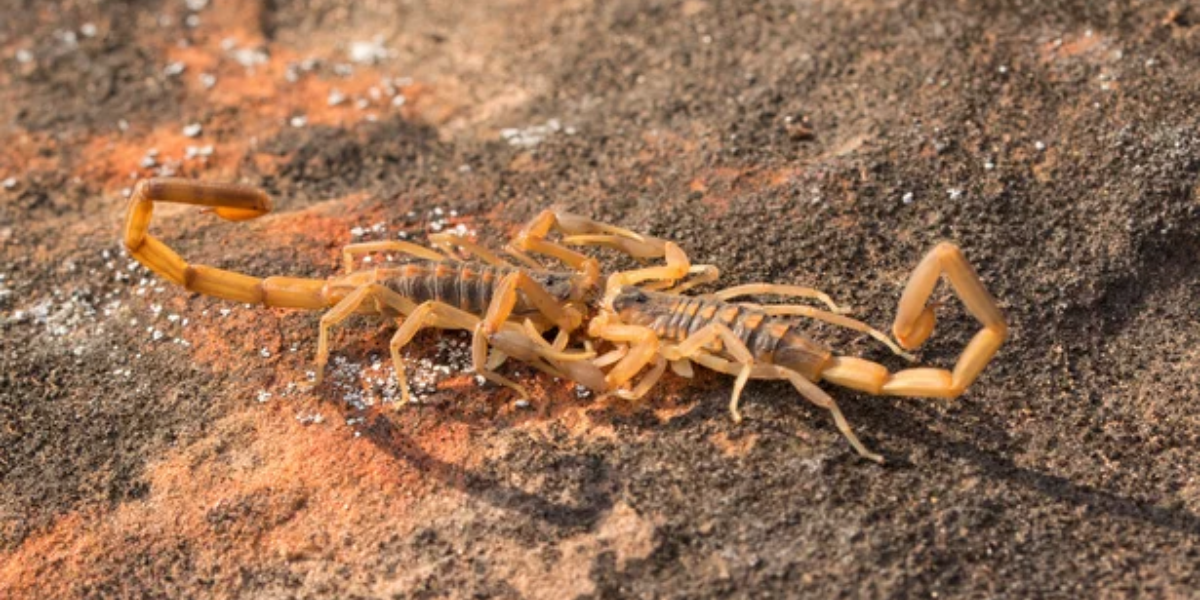
Bark scorpions are characterized by their slender bodies, ranging from light brown to tan in color, with two narrow pedipalps and a long, segmented tail ending in a venomous stinger.
These common dangerous animals in the Grand Canyon pose a significant threat to humans due to their potent venom, causing painful stings that can lead to severe reactions, especially in vulnerable populations such as children and the elderly.
However, their populations face threats from habitat loss, pesticide use, and climate change-induced alterations to their ecosystems.
Frequently Asked Questions
What is the most dangerous animal in the Grand Canyon?
Rock squirrel is the most dangerous animal in the Grand Canyon.
What animals roam around the Grand Canyon?
Bighorn sheep, mule deer, mountain lions, coyotes, and gray foxes are some common animals that roam around the Grand Canyon.
Are there bears at the Grand Canyon?
Yes, you can spot bears at grand canyon national park.
Are there cougars in the Grand Canyon?
Yes, there are cougars in Grand Canyon National Park.
- What Should I Do If A Koala Bites Me? Safety Guide - 2024-05-30
- Are Kangaroos Born Without Hind Legs? A Fascinating Journey - 2024-05-30
- Animals That Look Like Squirrels - 2024-05-30

